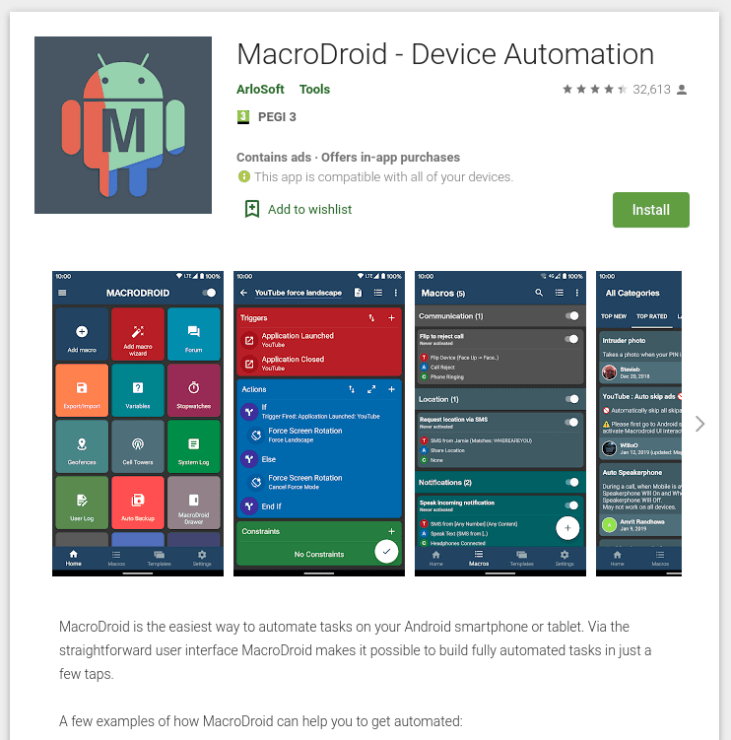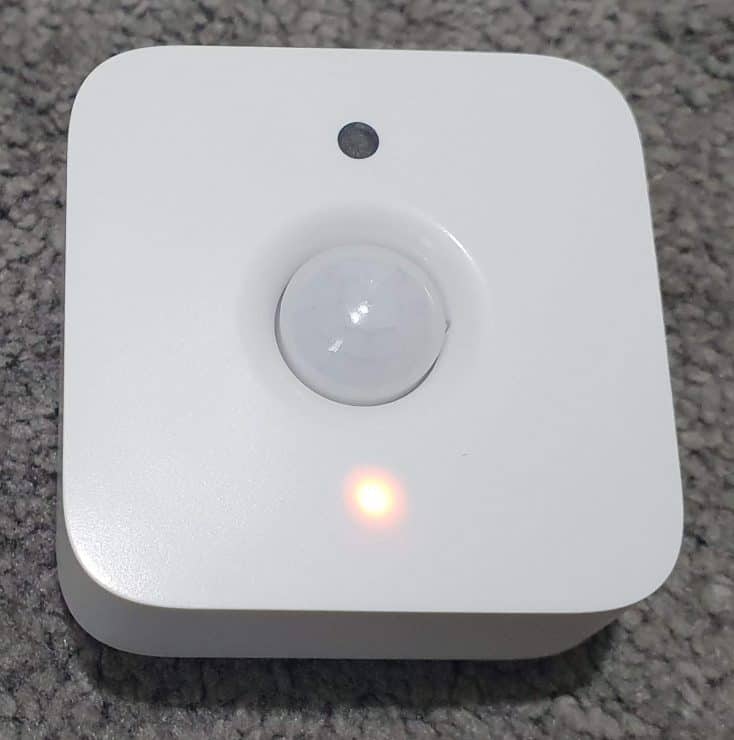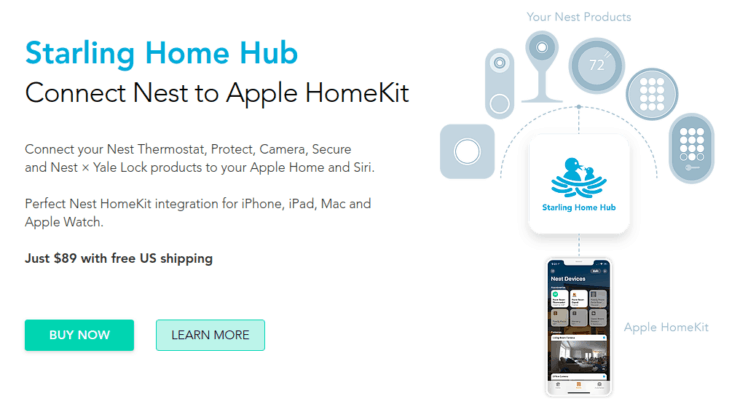A fairly desired (and standard) feature of smart doorbells and cameras is that they notify another service about motion, so that automation routines can run – for example, turning a smart light on when motion is detected.
This is possible with many smart doorbells and cameras, and is often as easy as integrating your device into the Alexa app and then setting up a routine which triggers when motion is detected, and does something else (i.e. turn lights on). This is a useful feature because the light coming on can discourage would-be burglars from targeting your home.
Since this is a normal feature, surely it’s possible with the Nest Hello doorbell and the Nest camera range too, right? Well… as my slightly sarcastic introduction implies, it’s unfortunately not (easily) possible right now on Nest.
Since Google shut down the public ‘Works with Nest’ API in August 2019, it’s a lot harder – and sometimes impossible – to get smart lights to turn on when your Nest devices detect motion. However there’s a few things you can try that might work.
How this used to be possible (pre August 2019)
Nest cameras and doorbells used to expose a lot of ‘action hooks’ via something called an API, under their ‘Works with Nest’ system. What this effectively meant was that third party developers and services could easily write computer code that would do something when your Nest device detected motion – or people.

about what Google
did to the Nest ecosystem…
As a result, there were loads of awesome things that you could configure to happen when motion was detected – including having smart bulbs or switches turn on some lights.
If you owned a smart bulb, chances are good that your smart bulb’s app had a feature to integrate with Nest devices and turn on/off as you’d like.
Unfortunately Google decided to kill off nearly all these third party integrations, by ending the ‘Works with Nest’ system in August 2019. Hence something that was very easy to setup – have a smart light come on when your Nest camera/doorbell detects motion – became almost impossible overnight.
Boo!
You’d think that Google did this because this feature is already possible on the Google Home app – but that’s unfortunately also not the case. Google Home routines don’t support this feature, even though it’s been long supported on the Alexa app and within Alexa routines.
This means that right now, there’s no simple way of taking a random, off-the-shelf smart bulb turn on when Nest detects motion. Nonetheless, there’s some options available to you – which I explore in each section below.
Option 1 – Don’t Migrate Your Nest Account, Use IFTTT
When Google originally announced that they were killing off (sorry, I mean “changing”) the ‘Works with Nest’ program, there was an understandable uproar from Nest users who have relied on the various third party integrations from Nest.
Google eventually backtracked a tiny amount, and announced that ‘Works with Nest’ will still work in some limited cases. Basically as long as you satisfy the following conditions, you can continue to use IFTTT:
- Do not migrate your Nest account to Google (meaning that you stick with the Nest app, and can’t use the Google Home app, for your Nest devices).
- Don’t disconnect the link you’d previously made between IFTTT and Nest.
Unfortunately anyone new to the Nest ecosystem can’t sign-up for an un-migrated Nest account and then link it with IFTTT, but if you’ve done both of the above before August 2019, you can continue to use IFTTT.
In other words, when your Nest camera or doorbell detects motion, it’ll inform IFTTT of this. You can then setup a IFTTT action to turn on your smart bulbs or switches.
Option 2 – Scan Your Phone For Nest Notifications With Automation Apps
Whilst Nest won’t hook into third party apps as easily anymore, you can use a clever hack/workaround: have an app scan your smartphone notifications, and detect ones from Nest that say that motion (or people) have been detected. You can use an app such as MacroDroid, AutomateIt or Tasker for this:

You can then do something else to turn your lights on. In terms of what ‘something else’ means, you unfortunately can’t use Tasker or MacroDroid to directly control another app (such as open the LIFX app and turn certain bulbs on).
But what you can do is use a third party smart bulb app such as Hue Pro or AutomateIt LIFX Plugin which come with plug-ins for your authomation apps.
In other words, you can get Tasker to turn your Hue bulbs on via the Hue Pro plugin.
Alternatively, you can have Tasker/MacroDroid/AutomateIt trigger off an IFTTT web hook that will then turn on your smart lights in the usual way.
Whilst this approach may seem a little convoluted, it’s actually a fairly smart workaround to the problem of Nest not integrating with other systems anymore.
Option 3 – Use Philips Hue (Maybe Someday..?)

Back in 2020, the Hue website has a whole page on their integration with Nest, saying:
Philips hue can interact with all your Nest® products, from using your Nest Cam to turn off the lights when you’ve left the room to switching your lights to the best setting to see through smoke if there is an emergency.
“Nest meets hue” page, as at 19th August 2020
This sounded really promising, although it seems that the page is out of date because three different people on Google Nest’s forums say that they purchased their Nest systems specifically due to the integration with Philips Hue, and they were disappointed that it no longer works as advertised.
I double checked this myself with Philips Hue, and they confirmed that their Nest integration currently doesn’t work:
This feature is currently not working due to technical issues with the legacy “Works with Nest” connections At the moment we are working closely with Google to bring back the Nest security features for your Hue lights, but at this time it’s still unclear by when this will be ready. We’ll keep you posted when it happens, so please keep checking our social channels for updates.
Philips Hue, Twitter, 19th August 2020
Whilst this was disappointing, back in 2020 I was hopeful that this support would eventually turn up. However it’s now mid-2022 (at the time of writing this update), and there’s still no progress. Hue still say that they hope this functionality will be unveiled “soon”, but I now doubt that proper support will appear.
As a result, there’s another workaround that’ll work well – onto option 4!
Option 4 – Use Smart Motion Sensors Next To Your Nest Cameras

Another clever hack to get around Nest’s poor integration right now is to put smart motion sensors next to your Nest cameras. These motion sensors will then also detect motion, and can easily pass this information back to your smart hub (such as a SmartThings hub) or controlling app (such as Alexa).
A simple example of this is a Philips Hue motion sensor, which is an indoor-only sensor but you can set this up to then trigger multiple lights to come on (and later go off) via the Hue app.
Since many smart motion sensors are battery operated, this is one of the lowest effort ways of getting your lights to come on when motion is detected. Yes you won’t be taking advantage of Google’s AI to determine that the motion is a person (and thus you could turn lights on when a fast car goes by!), but it’s better than nothing in my opinion.
Option 5 – Forward Nest Notification Emails To IFTTT or Zapier
This is a similar method to option 2, but it instead involves looking at your emails (not phone notifications) to determine if motion is activated.
This involves configuring your Nest cameras and doorbell to send you Nest motion/people alerts to your email instead. These emails also contain a high-resolution image that was taken at this time, so it’s quite useful to have in general.
What you can then do is setup an email forward so that just these Nest motion/people notification emails get forwarded onto a service like IFTTT or Zapier, and these emails can be the trigger for automation to occur.
As you can guess, the automation will be to turn on lights in this case. How you do this on IFTTT and Zapier will depend on what smart bulbs/switches you use, and whether automation applets already exist for them.
Option 6 – Use The Starling Hub for HomeKit Support
Finally, if you’re an Apple HomeKit fan, you may be in luck! Whilst HomeKit still doesn’t have Nest integration, the Starling Home Hub connects your Nest devices with HomeKit:

This is a really welcome change from most of the previously-dead integration between Nest and third parties, and a few people on Reddit have said that this works for them. For example:
Do you have an iPhone? If so HomeKit is apples home automation app. Unfortunately nest products do not natively appear in HomeKit but all of the Philips hue accessories do. If you buy the Starling Hub, all nest products will then be accessible in HomeKit.
Now for example I can configure my Philips lights to turn on when motion is detected on my nest cameras outside. Or if my nest alarm is triggered, turn on all the Philips lights
/u/Stalemyte, Feb 14th 2020
This is the exact sort of integration that used to work pre-August 2019, so it’s good that there’s still some way of getting this level of integration – even if it is exclusive to Apple HomeKit right now.

This was amazing thank you been trying and waiting for years to use my best hello yo turn on the front House lights. The macdroid notification trick is genius. If nest hello seems someone at say midnight near my house turning on front house lights is a great security feature. But how can I have them turn back off if no motion or “no notifications” reccived for say about 10 minutes after it happens . Thanks !
Haha yes, the MacDroid approach is definitely useful 🙂 In terms of turning the lights back off, that’s a good point – you can add multiple actions, with one being “Wait N seconds” (or minutes), and then turn the light off afterwards. I need to re-download the app and play around with it, but an example of this can be seen here: https://www.tapatalk.com/groups/macrodroid/issue-with-macrodroid-delay-function-wait-before-n-t6259.html
Great article! For options 2, do you know about any apps on iOS that will be able to scan your iPhone notifications? (from Nest in this case)
Hi Kristian, thanks! I’m not too sure about iOS sorry – I know that Shortcuts (https://apps.apple.com/us/app/shortcuts/id915249334 – previously called ‘Workflows’) does similar things, but I’m not sure if it can scan incoming notifications. This might be something that’s locked down to core iOS apps from Apple, but I’d be interested to know if Shortcuts does offer this as I couldn’t see from a quick Google search.
Did you find anything that does this. Because I was unsuccessful also.
Can option 5 turn the lights back off after the motion (person detection) has clleared
Basically to achieve this with IFTTT or Zapier, you’d need to chain actions so that the second action would be “wait 10 minutes” (or however long you’d like) and then the third action would be “turn off light”. IFTTT support for multiple actions and delays seems poor, although Zapier seems to handle this okay: https://zapier.com/help/create/customize/add-delays-to-zaps
I haven’t tried this specific option out myself though, but it should be possible.
Thanks for the great advice, Tristan! This is the best article in regards to IFTTT and Nest! Is there a free email service that can automatically forward emails for free to trigger at applet.ifttt.com without confirmation? Gmail, yahoo, yandex, aol, proton mail, iCloud are all a no go.
Per your recommendation, I have Nest email notification > Gmail > Zapier > Google Sheets > IFTTT > LIFX but it takes ~1.5min to 2.5min to execute. And once my free Zapier vs runs out, I believe it’ll pull my emails every 15min which means it could take 16-17min for the lights to come on.
Ughh, hopefully everything will play nicer once MATTER rolls out!
Thanks for the comment Jamie. I’m not sure of a free email service that will offer that no sorry. It does almost sound like your current solution is the ‘best’, but I agree that 1-3 minutes certainly isn’t ‘best’ at all!
I agree that Matter will hopefully improve things. I’m pleasantly glad that Google are part of Matter, because Google often seem to be the worst at third party integrations and ‘playing nice’.
Thanks, I am in the process of setting up a NEST Google system and thought I could set camera motion to switch on lights. Seems like a no brainer capability and now that I have just about everything installed I find out it won’t work! What a waste and even though I prefer the design of NEST devices over Ring it might have been better to go with Ring! I only have a few days to return everything now.
Yes I agree with everything you said, David. It’s really annoying. Nest has some great products, and a great platform (as you say), but they’re let down by silly integration issues. Killing off the Nest API was a big mistake in my opinion.